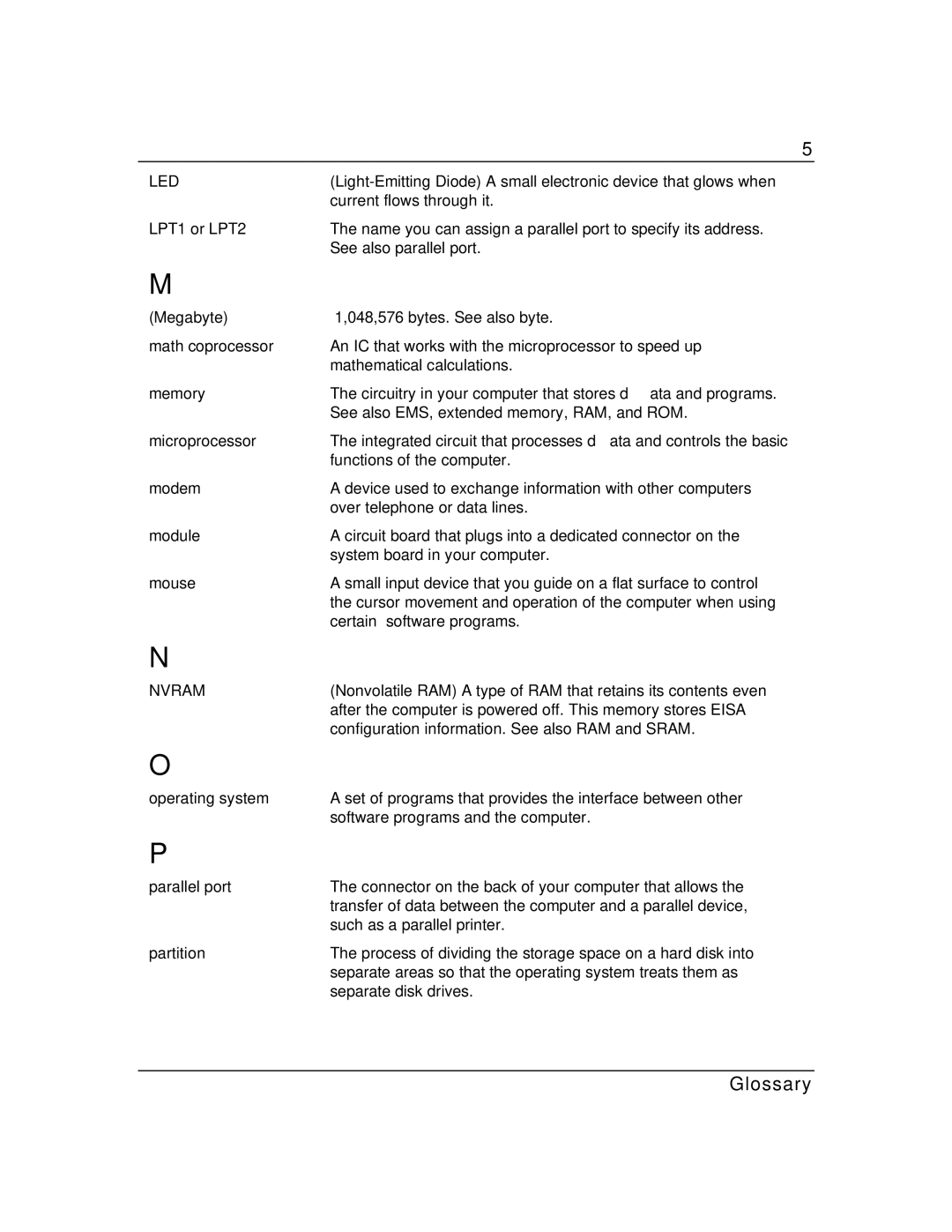| 5 |
LED | |
| current flows through it. |
LPT1 or LPT2 | The name you can assign a parallel port to specify its address. |
| See also parallel port. |
M |
|
(Megabyte) | 1,048,576 bytes. See also byte. |
math coprocessor | An IC that works with the microprocessor to speed up |
| mathematical calculations. |
memory | The circuitry in your computer that stores data and programs. |
| See also EMS, extended memory, RAM, and ROM. |
microprocessor | The integrated circuit that processes data and controls the basic |
| functions of the computer. |
modem | A device used to exchange information with other computers |
| over telephone or data lines. |
module | A circuit board that plugs into a dedicated connector on the |
| system board in your computer. |
mouse | A small input device that you guide on a flat surface to control |
| the cursor movement and operation of the computer when using |
| certain software programs. |
N |
|
NVRAM | (Nonvolatile RAM) A type of RAM that retains its contents even |
| after the computer is powered off. This memory stores EISA |
| configuration information. See also RAM and SRAM. |
O |
|
operating system | A set of programs that provides the interface between other |
| software programs and the computer. |
P |
|
parallel port | The connector on the back of your computer that allows the |
| transfer of data between the computer and a parallel device, |
| such as a parallel printer. |
partition | The process of dividing the storage space on a hard disk into |
| separate areas so that the operating system treats them as |
| separate disk drives. |
